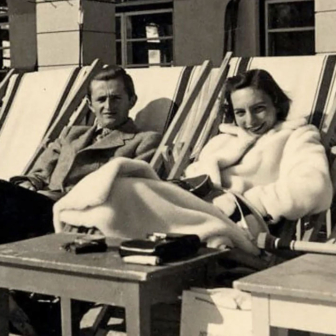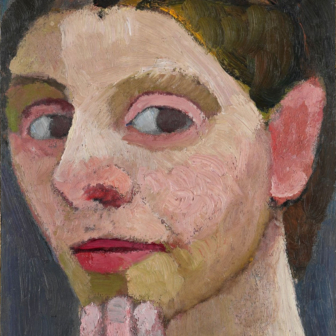Close to half a million Australian women fall pregnant each year, and half their pregnancies are unplanned. A smidge over 40 per cent of unplanned pregnancies end in an abortion, which means that around 20 per cent of pregnancies in Australia each year are terminated. According to our best statistical guesses, one Australian woman in six will have voluntarily ended a pregnancy by the time she is in her thirties.
The interesting addendum to this parade of facts is the covert nature of abortion procedures. The number performed in Australia is nearly impossible to accurately calculate because no specific Medicare item number exists (the rebate is shared with that for miscarriage curettage) and only South Australia collects data on pregnancy outcomes. Medical abortions are even more difficult to numerically assay.
Think about those facts for a minute: it’s the third most commonly performed surgical procedure in Australia but nobody, anywhere, is analysing or even supplying accurate statistical information as to numbers, types or reasons.
I am a women’s health services provider, and we professionals are all in agreement: the most fundamental right of those with uteri is to have agency over their bodies, their lives, and the means and methods of personal choice in reproductive health. And yet a procedure that is swift and accessible has been legalised in Australia on a piecemeal, state-by-state basis, influenced by differing standards of acceptability based on geography and local attitudes.
Abortion is the secret obverse of motherhood, a choice rather than a sacrifice, and that makes people, especially right-wing male Christian politicians, uncomfortable. You could say that Australia’s abortion policy comes down to this: you’re welcome to have one as long as you promise not to talk about it.
Madison Griffiths’s memoir Tissue positions her squarely in the eye of the abortion discourse storm. She is a feminist, a vegan, a cis-queer artist and published essayist, a podcaster and a domestic violence campaigner. In the middle of the Covid lockdowns in 2021 she was confronted with a pink line on a test strip, undeniable evidence of her own pregnancy. What action she chose to take is, of course, at the centre of this narrative. Griffiths decided to have a medical abortion.
There are things we never find out about Griffiths’s choice. We do find out about her problematic relationship with her own mother and her mother’s anorexia, about the love between the pair, and about Griffiths’s considered intention to become the opposite daughter to the child her mother asked for and expected.
Griffiths puzzles her conservative mother, with her unshaven underarms and legs, her non-conforming clothing, her same-sex relationships and her drug use. “[W]hen I consider my own connection to my mother,” she writes, “there has always been, injected into every goodnight kiss, every tense phone call, a complex thread of guilt; the feeling of having failed, having committed a grievous wrong against her, having let her down.”
Griffiths accepts her mother’s anorexia without qualification, and there is a moment in Tissue that made me catch my breath in wonder: the comparison between the fat-melting cling wrap encasing her mother’s abdomen and the condom Griffiths’s lover refused to wear. Her lover “felt suffocated once fitted in a clear casing, their body robbed of glee. They too, were hungry. But unlike my mother or myself, their hunger mattered.”
Griffiths’s central and complicated relationship with her mother is never completely resolved, although ultimately she implies that the choice to pursue termination, to opt out of parenthood, has given their dyad a degree of resolution. She describes her mother’s love after the abortion as “urgent and keen to shelter me from scorn, determined that I not become her parody, for she is my mother, and I am hers to protect.”
Abortion is, at the core of it, about choosing or denying motherhood, a choice formed from past experiences that will echo into the future: the branch in the path, one course taken and the other unseen, unknown, unknowable. Implicit in Griffiths’s decision-making is the knowledge that she may well experience premature menopause, an inherited condition that heightens the chance this will be her only pregnancy.
But we learn more about her thoughts after the abortion than before, once the termination has been given personhood in its own right and discussed like a breathing individual, both in the abstract and the concrete. Ironically, though, by discussing the effacement of her body by the unwilling nourishment of a being whose existence she considers complete and separate, Griffiths avoids a journey to the latest frontier in the war against women’s bodies.
The battlefield is shifting from women’s reproductive rights to the joyless self-effacement of modern motherhood, misogyny’s newest and most sinister gift. It is no longer considered acceptable to mother in any other way than by the most arduous of labour. Griffiths mentions the Instagram moments of parenthood, a newborn suckling its mother’s breast, a proud father in the background. But modern motherhood is now a matter of continuous soul-obliterating attention to each child, broken sleep for years at a time, an insistence that a crying baby or toddler risks severe psychological harm.
Where Griffiths’s mother’s abdomen was “ripped open” by childbirth, Griffiths spared herself the agonies of parenthood, describing her abortion as “a celebration of my vibrant, colourful, beautiful life. A homage to my joy.” And yet, and yet… Abortion is seldom chosen lightly. Of the aftermath of my own abortion, I once wrote, “I was unbalanced I knew, filled to the brim and over with rage — pure, white, volcanic anger. What tiny chinks remaining were stuffed with grief.”
We never really get to see any great ambivalence in Griffiths’s account of her feelings and motives. It is possible that she genuinely saw her abortion as an unmixed blessing, but she describes an episode of short-lived sobriety afterwards, the creation of a Spotify playlist that reflected her decision, a playlist in which the word “baby” featured in the titles of a third of the songs, which seems to suggest that the impact was greater than she had expected, perhaps more than she was easily able to accept.
Griffiths’s words can seem like they were carefully selected to obscure rather than clarify, as though within the 200-odd pages of her narrative we are given Griffiths only in glimpses, a minnow in a deep, still pool seen in flashes and fragments rather than as a discrete and integrated whole.
This left me musing on the obligations intrinsic to publishing a deeply personal narrative. What portion of the author’s life and experiences do we have a right to expect? Can we find a way of listening without considering ourselves entitled to the whole gory story?
But there are moments that invite elucidation in this book: the incident, for example, in which Griffiths smeared the blood of her abortion over the toilet in her boyfriend’s share house then motioned to him: that’s your problem, clean it up. We never learn what was going through her mind, what her boyfriend’s response was. Her actions are left hanging, without expansion, without analysis. It seems a strange place to exercise coyness.
In rebuttal, one could argue that memoir is selective by its very nature. The author weaves a story from a series of small but significant incidents, moments that, taken together, illustrate and unpack a greater whole. But Griffiths has opened up only part of her tale, and this causes her book’s straddling of the divide between the personal and the polemic — both its greatest strength and its greatest weakness — to be uneasy.
Truly, in its looping, discursive, sometimes unfocused and repetitive recitations, Tissue parallels the conflicting thoughts and emotions Griffiths must have felt when attempting to make sense of the event during three months of late-night sessions in front of the screen: the real-time processing necessary to place a life, unlived by choice, into the past. As a reader, however, it made me wish that Griffiths had spent more time with an editor.
There were also prolonged discussions of the impact of Roe v. Wade in America, but conspicuous in its absence was any reference to Griffiths’s home in Australia, a country in which abortion is legal and the tablets Griffiths took to procure her abortion easily obtained. Again, I wondered where this discussion would fit into the range of Australian experiences, and whether her narrative could be considered as representative. Australia is filled to the brim with stories, other women, other men, other lives.
Perhaps the strongest of Griffiths’s themes comes in her chapter on queerness and unplanned pregnancy. While it is a fact that very few trans men or lesbians will ever require an abortion, perhaps the marginalisation of that tiny minority means a genuinely queer-centred discussion is long overdue, and Griffiths is ideally placed to begin that process. I found myself impressed by the chapter and, later, thinking hard about the issues it raises.
I have provided abortions; I have had an abortion. My daily working life is a study in abortion and its consequences, in foetal abnormalities, terminations after the most bitter and agonising of discussions, sleepless nights and tears blotted by tissues drawn from the box that sits always on my desk.
I have needed to face my anger and grief honestly, head on, and acknowledge that my choice to prioritise myself — the right decision then and afterwards — came at a significant cost. I have subsumed my pain, transformed it into a crucible, a map to something new, something better. The consequences of my loss have made me a more feeling person, tougher and more aware. Perhaps because of that, I am strongly inclined to respect abortion narratives, and I found much to respect in this flawed but energetic book.
Griffiths recites her feelings over and over, each iteration varying only in its minutiae, creating a strange and tangled web of deliberation, her body a citadel invaded by a barbarian horde, the cells of her unplanned pregnancy. She reads widely; she quotes impressively; and many of those quotes made my heart sing.
Though her story ultimately feels to me like a delta — more breadth than depth — Tissue contains moments of great beauty and clarity, sentences that had me gasping, hand over mouth, in which I felt seen. This book has a tremendous heft, a combination of muscularity and verve, and I came away from it with benefits that are likely to increase with time. •
Tissue
By Madison Griffiths | Ultimo Press | $34.99 | 320 pages




